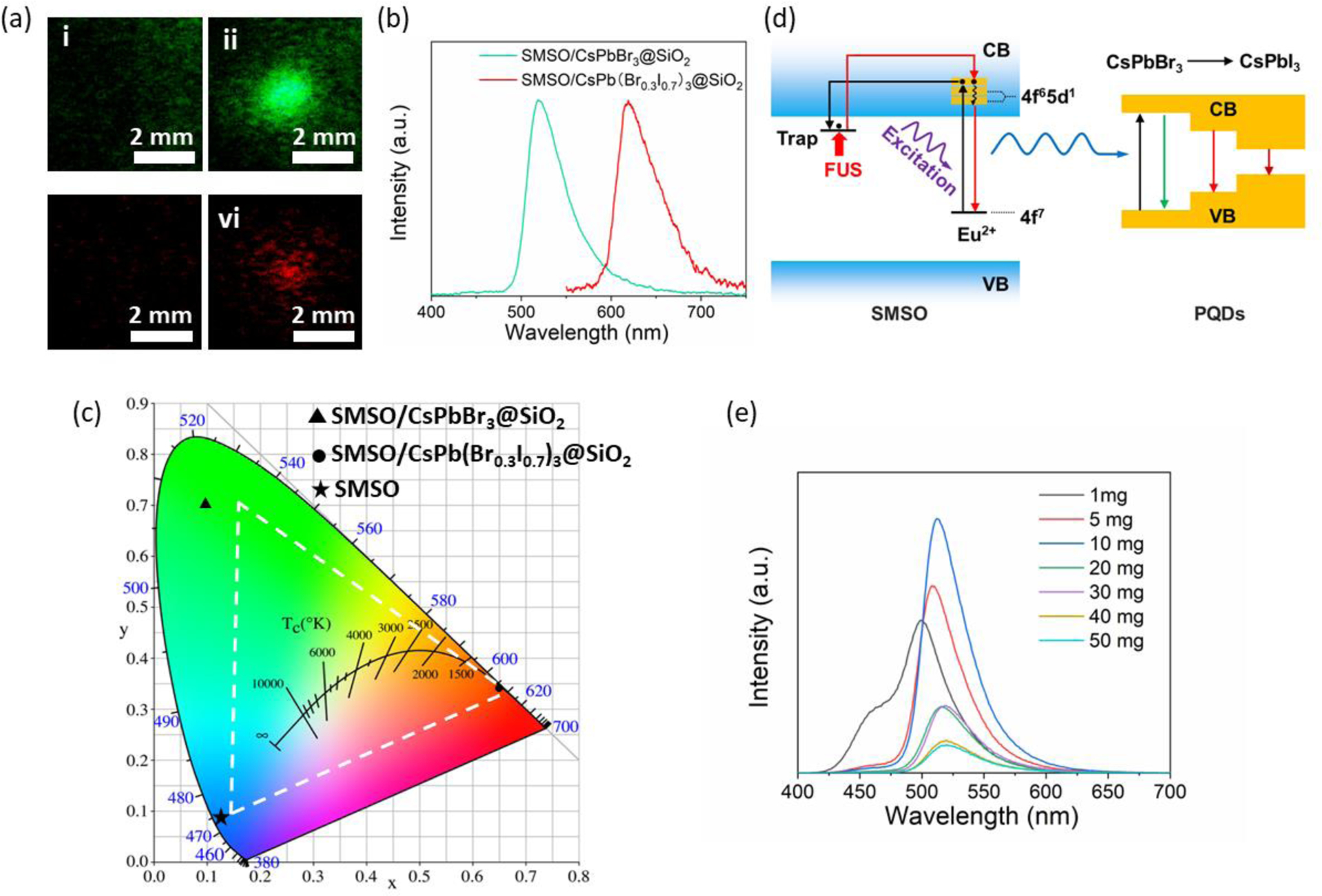Figure 4.

Color tuning of the SMSO/PQD composites. (a) Representative mechanoluminescence images of SMSO/CsPbBr3@SiO2 (i,ii) and SMSO/CsPb(Br0.3I0.7)3@SiO2 composites (iii,iv) in PDMS phantoms when FUS is off (i,iii) and on (ii,vi). (b) Mechanoluminescence spectra of SMSO/CsPbBr3@SiO2 and SMSO/CsPb(Br0.3I0.7)3@SiO2 composites in PDMS phantoms. (c) CIE chromaticity diagram of the mechanoluminescence emission color of PDMS phantoms containing SMSO alone, SMSO/CsPbBr3@SiO2, and SMSO/CsPb(Br0.3I0.7)3@SiO2. The color gamut defined in the NTSC color standard is highlighted by the white dashed triangle. (d) The proposed schematic of FUS-induced mechanoluminescence tuning through energy transfer between SMSO and PQDs. VB: valence band; CB: conduction band. (e) The afterglow spectra of SMSO/CsPbBr3@SiO2 phantoms with the amount of SMSO colloids fixed at 5 mg and various amounts of CsPbBr3@SiO2 PQDs in the range from 1 mg to 50 mg.
